Consumers no longer use the excuse of a party to buy spirits, with new flavours and formats to tempt. Here’s what’s shaking up the category
Luxury and premium are buzzwords in spirits at the moment, and that’s good news for retailers.
Jimmy Dhaliwal, who runs a Bargain Booze store in Warwickshire, confirms this has been a noticeable trend in his store in Atherstone. “Shoppers are going more for the quality options and they are definitely trading up within spirits, as well as some other alcohol categories. The weekend has been really vibrant for spirits sales.”
Hi-Spirits managing director Dan Bolton agrees. “It’s not about selling the cheapest brands, it’s about offering value for money,” he says. “Authentic bourbons, rums and gins have a strong appeal and with the right display and merchandising will grow spirit sales in the convenience sector.”
The move to premium means value sales rose 3.9% for at-home spirits to £3.2bn last year, while volumes rose 0.8% (Kantar Worldpanel 52 weeks ending 20 July 2014).
Meanwhile, the move upmarket isn’t the only trend shaping what shoppers are buying. The flavour trend running through most alcohol sectors has been big in this sector, while frozen pouches are another noticeable area of NPD.
Bolton notes that as well as “high consumer expectations of quality and authenticity”, one of the biggest drivers of growth for both spirits and pre-mix has been the growth of the Big Night In occasion. “Convenience stores are in a strong position to upsell the Big Night In market, but it does mean being flexible with displays at the right times of the week,” he adds.
Some brands, such as Fireball, may sell better from a chiller for impulse purchases on a Friday or Saturday evening, “although it may not be the best use of the fridge space at other times of the week”, he admits.
Alongside all of this there has been a strong focus on innovation in spirits. Diageo is one company that is investing heavily. “Today nearly 13% of our business comes directly from innovation,” says UK managing director Andrew Cowan. “My goal is that in the next five years innovation will account for 20% of our business.”
Earlier this year the company revealed developments for Pimm’s, Smirnoff, Captain Morgan, Gordon’s and Cîroc.
Diageo’s Pimm’s brand is getting a big push this year - something that should please retailers because it’s a brand that generally works well in many stores. “Pimm’s does sell well in the summer here, and we do a promotion with strawberries in the core weeks,” explains Nick Davey, who manages Knight’s Budgens in Hassocks, West Sussex.
As well as a frozen variant and a return of its vodka cup, Pimm’s will appear blended with cider as a Cider Cup, and a new variant will join the range.
Pimm’s Strawberry with a Hint of Mint (rrp £11.99 for 70cl) joins its flavours range, following the “huge success” of Pimm’s Blackberry & Elderflower. It will also be available in a 1ltr and pre-mixed can format.
The pre-mixed sector
Pre-mixed drinks help people buy drinks they don’t have to create themselves, and consequently appeal to a wide consumer base.
Retailers such as Nick at Knight’s Budgens says sales of these drinks tend to “tick over nicely”, although he admits the store doesn’t have the space to offer these chilled.
Having chilled options will help drive impulse sales, but the good news is that wherever these drinks are sited stores have plenty of options to choose from.
The latest offering from Diageo is the 4.7% ABV Smirnoff Ice Double Black containing guarana, while Jack Daniel’s announced recently it was adding a Tennessee Honey & Lemonade pre-mix to its line-up.
The latter, by Bacardi Brown-Forman Brands (BBFB), is available in a 330ml can. The launch stems from the success of the Tennessee Honey spirit variant, and the pre-mixed can will now sit alongside others in the range: Jack Daniel’s & Cola and Jack Daniel’s & Ginger.
“Jack Daniel’s Tennessee Honey has surpassed all expectations and we are confident that this new variant will successfully tap into the consumer need for convenient spirit solutions and further drive category growth,” says BBFB American whiskey trade marketing manager Crispin Stephens.
Pernod Ricard, meanwhile, has refreshed the look of its four-strong Malibu pre-mix cans, while also adding a Diet Cola flavour to the range. Sales for the brand rose by 25% to £2.26m, although the most popular variant, Pineapple, saw its sales rise fivefold to £1.35m, the company says.
With the new Malibu Diet Cola, Pernod looks to tap into a growing interest in diet variants within spirits pre-mix products. Sales for Diageo’s Smirnoff & Diet Cola reportedly rose by 44.2% last year, while sales for its Gordon’s Gin & Slimline Tonic grew 27.6%.
Debs Carter, marketing director for alcohol at SHS Drinks, says innovation is “even more vital” in this sector, because these tend to be drinks which are popular among 18- to 24-year-olds “who are always keen to try something new and keep up with the latest trends”.
The company continues to invest in npd, with recent activity including a new limited-edition flavour (WKD Vegas), WKD Original Blue in a 250ml freeze pouch pack, and extending the WKD range of pricemarked packs (WKD Red 700ml bottles are now available in a £2.99 PMP) and a new pack design across the full WKD range.
In terms of trends in this sector, Carter says: “The popularity of the RTD-based cocktail is probably one of the biggest trends we’ve seen among young adults in recent years.”
The company launched a 10x275ml ‘Mix It Up’ cocktail-themed pack last year to help retailers tap into this growth area.
Another area of innovation to note in this sector is the rise of freeze pouches. Drinks giant Diageo has expanded further into frozen drinks this year with Pimm’s Summer Crush and Gordon’s Frozen Cooler, to sit alongside existing pouch offerings from its Smirnoff and Parrot Bay brands.
“We think our next milestone will be to double the size of this category to £30m by 2017,” says head of category development James Cragg. “When customers host an evening at home they are looking for something a bit special. These products also play brilliantly into the convenience trend, and sales of these are generally incremental to other drinks spend.”
Parrot Bay ‘Freeze and Squeeze’ cocktail pouches were launched in 2013 and have since sold five million units in the UK, according to Diageo, with 37% of buyers going on to make a repeat purchase.
And this April SHS Drinks brought out its WKD Original Blue in a freeze pouch format (rrp £2.50), supplied in shelf-ready display outers of 9x250ml packs.
Vodka
At his Bargain Booze store Jimmy says he has noticed a lot of interest in the premium tier of vodka.
“Shoppers are going for Cîroc and Grey Goose, in different flavour variants,” he says. “We also sell Belvedere. It seems that people are not afraid to spend £35 or £40 on a bottle and are definitely going for the quality options, if not quantity. They are paying more for these brands and trading up from the standard variants.”
To take advantage of this interest in premium and flavours Diageo Reserve (its premium arm) has invested in its Cîroc vodka brand. In March Cîroc Pineapple, rrp £38 for a 70cl bottle, joined its line-up.
“Over the past year the market for luxury vodka has grown by 28% and Cîroc is at the forefront of this success, growing by 70% over the same period,” says head of Reserve brands Nick Temperley.
Meanwhile, value sales for Smirnoff have been aided by the launch of its premium extension, Smirnoff Gold.
And Absolut, one of the experts when it comes to flavoured vodka, chose cherry for its latest flavour push. It can be drunk as a long mixed drink, or in a cocktail.
Even Californian wine producer E&J Gallo sees spirits as a growth area for its UK sales. The producer is throwing more money at its premium vodka brand New Amsterdam Vodka, which it launched in the UK last year. A multi-million pound campaign for the brand will include digital and outdoor advertising as well as social media.
“The launch of ‘It’s Your Town’ and increased investment behind the brand in 2015 will demonstrate commitment in a tough category and will mark New Amsterdam Vodka as the trendy new alternative to other vodka brands,” says the brand’s marketing manager James Taylor.
And for Diageo, vodka works across many of its brands; the drinks giant announced it would be bringing back its Pimm’s No.6 Vodka Cup at the end of this month.
Rum
Cherry looks to be one of the flavours of 2015. Halewood International recently added it to its Lamb’s Spiced range of rum. The 30% ABV drink was introduced in response to consumer demand for flavoured spirits, in addition to the continued growth of the golden rum category, according to the producer.
“Consumers have told us that they enjoy Lamb’s Spiced’s smoother taste, but are also looking for sweeter alternatives,” explains head of spirits and agency brands at Halewood, James Wright. “The spiced rum category has seen significant growth in both the on and off trade and we believe our cherry variant offers a genuine point of difference combined with a recognisable flavour.”
Golden rum has been going from strength to strength, reflected in good growth for brands such as Lamb’s Spiced and also Captain Morgan Original Spiced Gold, which producer Diageo says has seen “double-digit volume growth”.
Diageo is so confident in this brand that this year it added a white rum variant, backed by a seven-figure marketing campaign, despite a decline in both volume and value sales for the white rum sector since before 2012.
And there is also plenty of activity in the pipeline from drinks producer Pernod Ricard. Pernod says its rum brands will be a big focus for its summer investment plans, and off-trade activity will include a coconut cup giveaway for Malibu and a Mojito tin for Havana Club. There is also a retro cocktail neck-tag campaign for rum and coffee brand Kahlua.
The producer says 55% of the annual volumes for Havana Club Añejo 3 Anos were sold between May and September last year.
Meanwhile, to tap into a consumer demand for premium, BBFB relaunched Bacardi Gold last year, pushing its ABV levels from 37.5% to 40%.
Whisky and gin
The move into premium is also noticeable in gin. “Flavours in gin did take off for a while, but now it’s more about the premium brands, such as Tanqueray and Hendrick’s,” says Kay Patel, who runs four Bestway-supplied stores in East London. “Three years ago Bombay Sapphire was the most premium brand we stocked, but now we have other options and are seeing a lot more demand.”
And Jimmy says that in his Bargain Booze store he is seeing a growing interest in gin and whisky from young adults. “Even within gin people are showing a desire to try new stuff,” he says.
And in whisky the store still attracts an older generation of whisky fans, he says, “but those aged 18 to 30 are more experimental and they want a fusion of flavours”.
Within whisky, UK distributor Maxxium is offering help to convenience retailers via its latest pricemarked packs across The Famous Grouse 70cl and 35cl as well as Highland Park 35cl and Laphroaig 35cl. It is also offering smaller pack sizes across The Famous Grouse (35cl and 20cl). “This is to help support the retailer in managing cash flow and allowing for better stock management,” says business sales sector controller, impulse, Andrew Morrison.
He also reminds retailers to think about whisky when it comes to tapping into the at-home cocktail craze.
“Whisky cocktails are proving to be incredibly popular,” he says. “Convenience retailers can take advantage of this by making the shopping mission as easy as possible and cross-merchandising spirits with mixers and snacks, as well as offering simple serving suggestions across their range of spirits.”
When it comes to choosing which whiskies to stock, Morrison believes consumers who plan to drink at home are increasingly looking for more than the traditional choices.
Well-established brands in each sector, such as The Famous Grouse, are a “must-stock”, he says, but newer drinks can help to attract a wider audience.
“The Black Grouse, with its smoky finish, tastes fantastic with a twist of orange peel or served long with cola.” The Grouse range also includes Ginger Grouse, a ginger beer blended with whisky.
Maxxium also has brands with luxury credentials, such as Laphroaig Select, to appeal to those wishing to upgrade to premium spirits.
American whiskey is also doing well, as BBFB confirms. The producer says its Jack Daniel’s Tennessee Honey, which launched in August 2012, achieved value growth of 53% to £28.3m last year (Nielsen year to October 2014).
Maxxium UK, meanwhile, continues to add to its Jim Beam range of whiskies, comprising flavours of Honey, Maple, Apple and Red Stag by Jim Beam.
Trends
Appealing to ‘Millennials’
There’s a lot of talk about the ‘Millennials’ consumer group at the moment. They are drinking less than their parents did, don’t know the world without the internet, and they like to experiment with flavours. So how can convenience stores cater for this group?

“The way young people organise their social lives has evolved significantly and this has impacts on sales patterns,” says SHS’ Debs Carter. “With easy access to the latest technology and social media platforms, young adults can arrange a gathering at the touch of a button, often with everyone purchasing a contribution for the evening.”
The availability of chilled RTD products is “absolutely essential” for this group, she says, and “providing chilled stock is a key way for independents to meet the needs of purchasers and offer something not widely available in multiple grocers.”
Global Brands marketing director Simon Green stresses the importance of at-home cocktails, as more than half of 18- to 24-year-olds are now choosing to celebrate special occasions within the home, he says. “Brands such as Corky’s Alcoholic Mix and Jungfrau Krauter Likor fit this bill for consumers who want the on-trade experience in their home.”
He advises putting soft drinks close to spirits to maximise the opportunity for up-selling.
Dan Bolton, managing director at Hi-Spirits, points out that people are going out less often, and looking to entertain at home more. “Retailers can tap into this trend with brands that appeal to the 18 to 30 demographic, which at its simplest means shots, flavours and premixes.”
Maxxium UK’s Morrison notes blended whisky is on the rise as “it looks to attract younger drinkers into the category by focusing on the art of blending and the quality ingredients that are used to create a balanced blend every time”.
Trends
The fashion of flavours
Flavour variants have been hitting the shelves in many spirits categories, but for convenience retailers the ambush of flavours all vying for shelf space can be overwhelming.

Kay Patel, who runs four Bestway-supplied stores in East London, says his strategy has been to stock any new flavour that he thinks might appeal to his customers, but in doing so the worst-performing flavour in his existing line-up will get axed.
“It’s particularly an issue in vodka where we’ve discontinued a lot of the Smirnoff flavours, such as lime and vanilla,” he says. “Instead we have replaced these with flavours from Absolut and Cîroc, which seem to be better sellers at the moment. There’s also more money in these for us so it makes sense - we can get £4 per bottle with brands such as Cîroc compared with £1 a bottle with the Smirnoff flavours.”
Jimmy Dhaliwal, who runs a Bargain Booze in Warwickshire, believes flavours are an area to watch. “Flavours are likely to be an even bigger trend this year,” he predicts. “The days of traditional vodka are going out the window. People are experimenting and they want a different fusion of flavours - younger consumers in particular seem to have a different palate.”
Craig Chapman, marketing manager for Luxardo at Cellar Trends, points out that the ongoing consumer desire for more flavours can be advantageous for the convenience retailer.
“Choose those brands which are not widely stocked in the multiples, such as the Luxardo Mint Sambuca, which can be drunk easily as a neat chilled shot, too,” he advises.
A trust in flavours has also led to the birth of ‘spirit drinks’. Consumers don’t necessarily know or care what alcoholic base these drinks contain; it’s the flavour and image that appeals.
An example of this is Diageo’s Parrot Bay flavoured spirit drink, launched at the end of last year. The drink, which is designed to appeal to younger female drinkers who want to share drinks with friends, contains a third of Caribbean rum with variants including strawberry, passion fruit and coconut.
Liqueurs and other spirits
Popular brands with a good flavour portfolio are generally faring well. Global Brands says its best-performing range in spirits is the seven-strong Corky’s Alcoholic Mix range, which grew 274% in sales last year (GBM data to December 2014).

“Following the success of Corky’s Mango Glitter Mix [which contains edible glitter] we plan to launch a Raspberry Glitter Mix this May,” says marketing director Simon Green.
The launch will include the chance to win a £1,000 hen party and 100 hen party packs.
Herbal liqueurs are also attracting interest. Herbal spirit drink Jägermeister reports double-digit value and volume growth in the off-trade (Nielsen, year to 3 January 2015).
This year the producer is putting its weight behind a multi-million pound five-month campaign to support its Root56 long drink serve (Jägermeister with ice, ginger beer, lime and cucumber).
Choosing which format to stock is important, says Jägermeister marketing controller Jonathan Dennys. The company introduced its first PMP bottles in September last year, and has a range of sizes to tap into increased demand for fractionals.
He adds: “35cl bottles now account for one-fifth of all spirits spend in convenience (Nielsen), and is a trend reflected in sales of Jägermeister 35cl, which is performing well.”
In brief
Jim Beam Apple joins the line-up
Maxxium UK is launching Jim Beam Apple (rrp £19.70 for 70cl) this month to recruit consumers into US whiskey. A signature cocktail suggestion accompanies the launch; Jim Beam Apple Splash mixes Jim Beam Apple and tonic over ice with a lemon wedge. The launch will be supported with TV advertising.
Shades giveaway with a Twist
Halewood International has revealed an on-pack offer for its pre-mixed cocktail brand Caribbean Twist. Fans can win one of 52 designer sunglasses vouchers worth £150 each. The campaign runs between May and the end of August.
New look for Southern Comfort
Southern Comfort has redesigned its packaging to better reflect the brand’s heritage and ‘Whatever’s Comfortable’ positioning. The new shaped bottle boasts a new star icon on neck and label.
Guide to boosting your spirits
Maxxium UK has created a guide to maximising spirits profits in the impulse channel. Know Your Store is a five-step guide covering identifying an outlet’s customer base to revamping merchandising structure, and provides insight on the latest on trends. For a copy, email knowyourstore@maxxium.com.
Market data
RTD sales are 18% higher than average over the summer months and 21% of the total sales for pre-mixed cans last year were in July and August (Nielsen eight weeks to August 16, 2014)
Pricemarked packs account for £12.7m of the £61m-worth of RTD sales through impulse stores (Nielsen to 28 March 2015), which is more than double on a year ago. And PMPs account for 11% of total spirits, growing at 52% (Nielsen, MAT to 6 December 2014)
The frozen drinks sector for the at-home market is now worth £14m (Nielsen, value MAT to 3 January 2014)



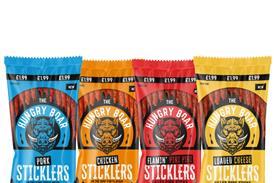
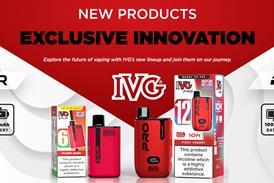
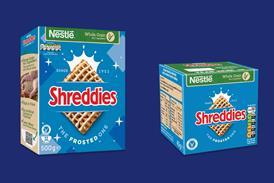

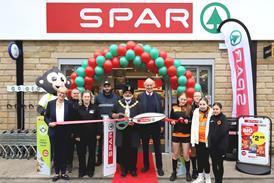
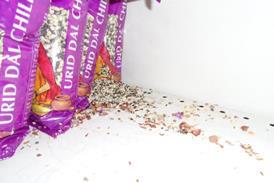






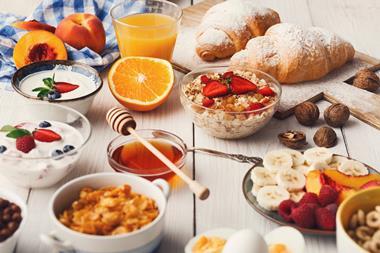
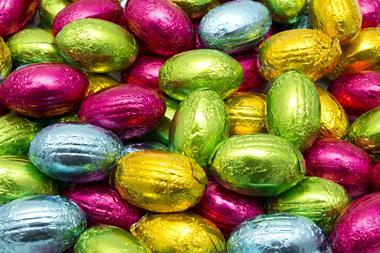
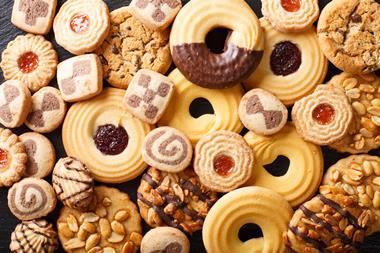

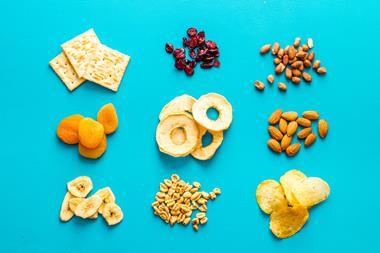
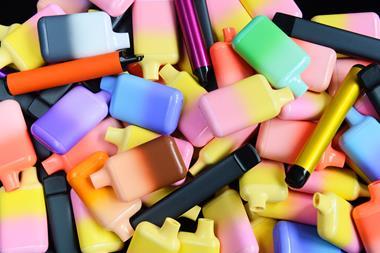
No comments yet